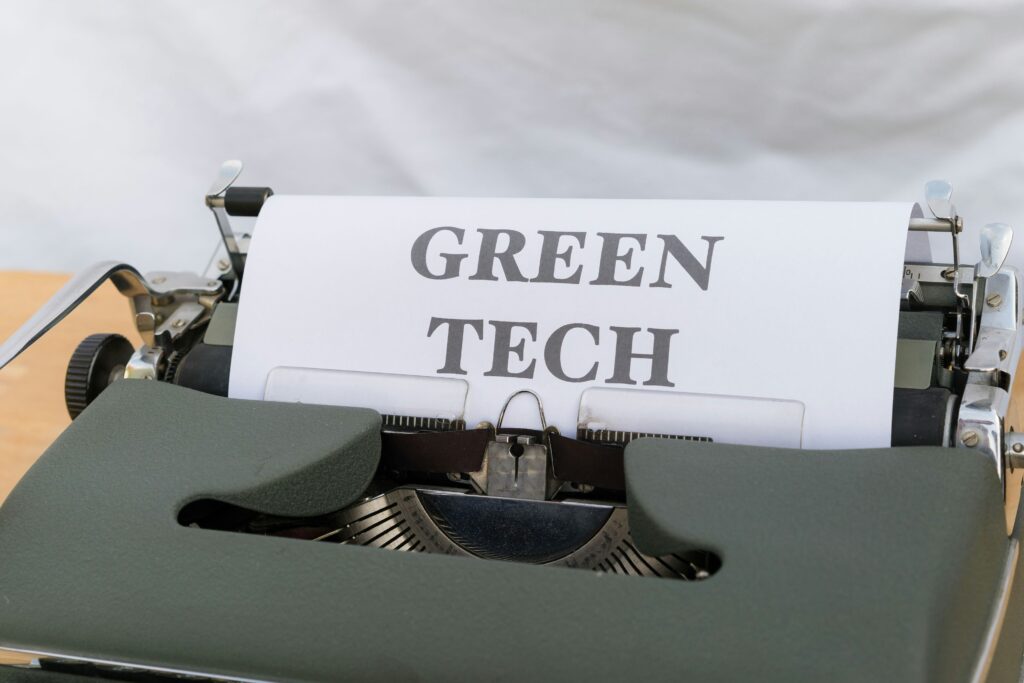Tech and Sustainability: No Longer Optional
Sustainability used to be a nice to have. Now, it’s survival. Between tightening regulations, shifting consumer expectations, and investor pressure, companies that don’t prioritize sustainability are already falling behind. It’s not about grand gestures. It’s about smart systems that reduce waste, track impact, and future proof operations.
Technology has flipped the script. What used to be a cost center energy audits, carbon tracking, sourcing transparency is now a growth lever. Real time data platforms help businesses monitor emissions as easily as clicks. Automation trims excess from supply chains, slashes downtime, and maximizes resource usage. Carbon tracking tools now plug directly into ERPs and dashboards, turning climate impact into a core business metric.
Companies aren’t just cutting carbon to look good they’re doing it to stay relevant, efficient, and profitable. Sustainability is no longer the end goal. It’s the operating system.
Smarter Energy Use for Long Term Gains
Technology is transforming how businesses manage and consume energy not just at scale, but efficiently and intelligently. Today, smarter tools are helping companies cut waste, reduce emissions, and ultimately save money. Here’s how:
Optimizing Energy with IoT and AI
The rise of Internet of Things (IoT) devices and artificial intelligence means companies can monitor and manage energy usage in real time:
IoT sensors track usage patterns in lighting, HVAC systems, machinery, and more
AI powered analytics recommend adjustments to reduce energy spikes and inefficiencies
Automation enables smarter scheduling, reducing energy use during off peak hours
Together, these tools offer not just visibility but control over energy consumption at a granular level.
Cutting Waste Through Predictive Maintenance
Instead of waiting for systems to fail or sticking to rigid maintenance schedules businesses are using tech to predict when equipment needs attention:
AI models anticipate equipment failures, reducing downtime and energy waste
Smart sensors detect inefficiencies in motors, refrigeration units, and other equipment
Maintenance becomes proactive and cost effective, extending asset lifespans
This approach is especially powerful in manufacturing and logistics, where energy intensive operations can generate high hidden costs.
Visualizing Impact with Energy Dashboards
For many companies, data is only useful when it’s actionable. Energy dashboards turn data into insights:
Track energy consumption across departments or locations
Monitor real time carbon output and progress toward sustainability goals
Identify patterns and correlate energy behavior with process performance
These dashboards give teams the tools to make decisions that align economic goals with environmental responsibility.
In short, smarter energy use isn’t just about cutting costs it’s about using insight and automation to build sustainable growth.
SMEs Are Leading the Local Charge

Small and medium enterprises (SMEs) are quickly becoming the unexpected heroes of the sustainability movement. While large corporations often get the spotlight, smaller businesses are proving that impactful change doesn’t require massive budgets just the right technology.
Affordable, Scalable Clean Tech
Thanks to falling costs and improved accessibility, clean technologies are no longer reserved for massive enterprises.
Low cost energy monitoring tools allow SMEs to track and improve energy efficiency
Cloud based sustainability platforms make compliance and reporting simpler
Modular systems enable companies to scale solutions at their own pace
Grid Independence from the Ground Up
More SMEs are adopting solar and battery technologies to gain independence from traditional energy grids. This not only reduces their carbon footprint, but also buffers them from volatile energy prices and grid instability.
Rooftop solar panels and compact storage units now fit within SME budgets
Smart inverters and microgrid tech allow for local energy balancing
Energy independence empowers businesses in remote or underserved areas
Custom Solutions, Global Impact
SMEs operate in diverse industries and locations, so one size fits all doesn’t work. Instead, tailored renewable solutions are making real world sustainability achievable for more organizations than ever before.
Industry specific clean tech options (e.g., energy efficient refrigeration, low emission transport alternatives)
Localized sourcing and deployment models reduce implementation friction
Partnerships with tech providers streamline adoption and long term maintenance
For a closer look at solutions specifically designed for SMEs, explore this resource: SMEs renewable solutions
The Digital Shift Toward Circular Models
Technology is reshaping how businesses approach product life cycles what once ended in waste now holds potential for reuse, repair, and reinvention. The shift toward circular models is being powered by digital tools that offer visibility, accountability, and scalability.
Blockchain for Supply Chain Transparency
One of the most promising technologies in the circular economy is blockchain. By recording every step of a product’s journey, from raw material to end user, companies can:
Authenticate sourcing claims (e.g., ethical labor, sustainable materials)
Reduce fraud and mislabeling
Comply with growing regulatory requirements
Increase consumer trust through verifiable tracking
Platforms Enabling Repair, Reuse, and Resale
Digital platforms are making it easier for businesses and their customers to extend product life cycles. These solutions are designed to turn waste into opportunity:
Marketplaces specializing in upcycled and refurbished goods
Apps connecting users with local repair professionals
AI driven tools that recommend reuse strategies or optimize return logistics
These platforms not only reduce landfill contributions but also unlock new revenue streams, lower costs, and improve brand loyalty.
Smart Packaging and Embedded Sensors
Smart packaging goes beyond labeling. With embedded sensors and IoT enablement, companies are now able to:
Monitor temperature, freshness, or tampering in real time
Improve inventory management and reduce spoilage
Trigger recycling or take back programs through QR codes or RFID
This tech forward packaging strategy reduces waste and enhances the customer experience by delivering better quality products and clearer end of life instructions.
Circular economy efforts gain traction when they are data informed, tech enabled, and user friendly qualities that are quickly becoming central to sustainable business models.
Beyond Compliance: Carbon as a Metric for Success
Carbon metrics aren’t just for ESG reports anymore they’re becoming core business KPIs. More companies are baking carbon tracking right into their business dashboards, not as an afterthought but alongside revenue, customer acquisition costs, and inventory turnover. Live data from sensors, supply chains, and cloud platforms now feed into centralized systems, giving decision makers near real time visibility into their environmental impact.
But tracking alone doesn’t cut it. There’s a growing push to separate carbon offsetting often a financial stopgap from real, operational reductions. Tools today can distinguish between the two. Whether it’s AI backed analytics or blockchain backed proof of reduction, smart systems are clarifying what counts and what’s just noise. Companies leaning into this clarity are making smarter choices: rerouting logistics, switching vendors, reducing packaging, or cutting down on travel.
And the payoff? Beyond doing the right thing, the ROI is tangible. Stronger brand loyalty. Lower regulatory risk. More resilient operations. Sustainability is showing up as a competitive edge, not a drag. And that changes everything.
What It All Means for the Future
Innovation Will Define Market Leaders
Sustainability is no longer a niche initiative it’s a competitive edge. Companies that integrate eco conscious practices into their core strategy are setting the tone for their industries. The difference between leaders and laggards isn’t just about values anymore; it’s about innovation.
Forward thinking companies are embedding sustainability into product design and operations
Innovation driven by environmental responsibility is attracting customers, investors, and talent
Sustainability is becoming a long term performance metric, not just an ethical benchmark
Technology: The Great Equalizer
As new platforms and tools become more affordable and accessible, integrating sustainability into your business model is no longer reserved for the enterprise giants.
Cloud based dashboards and mobile friendly solutions democratize access to carbon tracking
AI and automation are simplifying energy and resource management
Open APIs and modular systems offer plug and play solutions for various industries
The tech stack once seen as a luxury is now a basic requirement for climate conscious operations.
SMEs: Positioned to Win
Small and medium enterprises (SMEs) are uniquely flexible and agile, making them well suited to adopt sustainable technologies at speed. With falling costs, localized solutions, and growing support networks, SMEs have a real chance to lead the charge in their communities and markets.
Clean energy solutions like solar + storage make grid independence realistic
Tailored, scalable technology helps avoid waste while improving margins
Communities value and reward local businesses putting sustainability at the forefront
For a deeper understanding of how SMEs are thriving with clean technology, explore renewable paths for SMEs.
The future of sustainable business isn’t far off it’s already here for those willing to adapt and invest.

 Carolyna Riteralo is a passionate contributor to the project, focusing on sustainable urban development. With her background in architecture and urban planning, she provides valuable perspectives on integrating green spaces and eco-friendly designs into urban environments. Carolyna works collaboratively with the team to implement strategies that enhance community well-being and foster a connection with nature. Her dedication to creating greener cities makes her a vital member of the project, as she helps shape initiatives that promote resilience and improve the quality of urban life.
Carolyna Riteralo is a passionate contributor to the project, focusing on sustainable urban development. With her background in architecture and urban planning, she provides valuable perspectives on integrating green spaces and eco-friendly designs into urban environments. Carolyna works collaboratively with the team to implement strategies that enhance community well-being and foster a connection with nature. Her dedication to creating greener cities makes her a vital member of the project, as she helps shape initiatives that promote resilience and improve the quality of urban life.